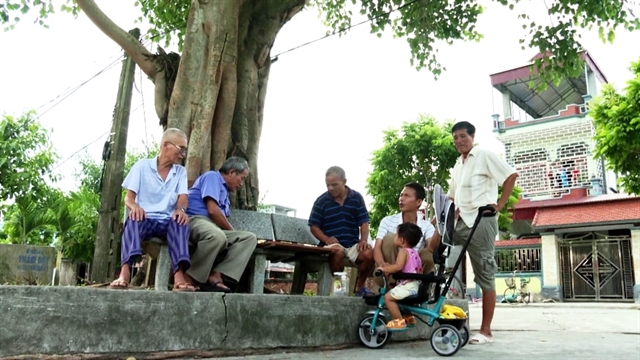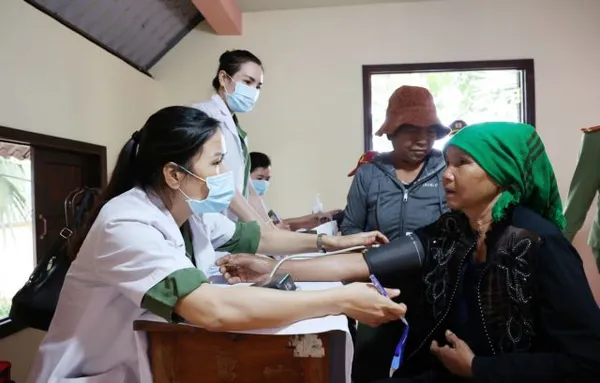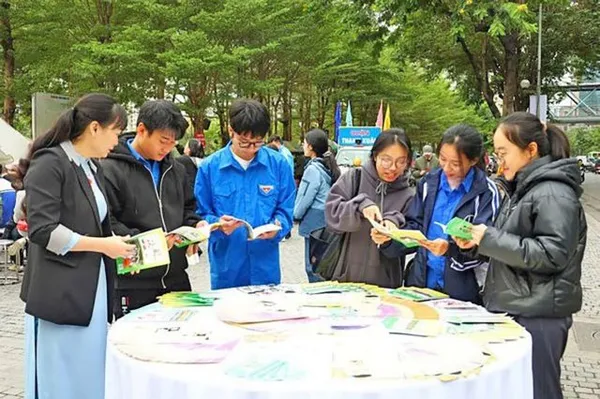 Society
Society

 |
| Elderly in Phú Thọ Province. — Photo daidoanket.vn |
PHÚ THỌ — For the past three years, Nguyễn Thị Vân from Đào Xá Commune, Thanh Thủy District, Phú Thọ Province has had to bring her mother-in-law, who lives alone, to her home to take care of her after the elderly woman suffered a stroke.
Vân’s mother-in-law, who is over eighty years old, lives alone after her husband passed away a long time ago, has since been bedridden, fully dependent on others for eating, hygiene and personal needs.
Previously, the elderly woman lived with her younger son, but his family later moved elsewhere for work.
“Now because she is in this situation, my husband and I have to bring her home to take care of her, even though she used to prefer living independently,” the 47-year-old woman told daidoanket.vn.
Vân’s mother-in-law is one of nearly eight million elderly people in Việt Nam living in rural areas, where caregiving for ill and elderly parents is primarily reliant on their children.
According to the Vietnamese Elderly Population: Analysis from the 2021 Population Change and Family Planning Survey conducted by the General Statistics Office (GSO), during the period 2019–2021, Việt Nam's total population increased by 2.07 million people (from 96.21 million to 98.28 million), while the elderly population (those aged 60 and older) increased by 1.17 million people (from 11.41 million to 12.58 million, accounting for 12.8 per cent of the total population).
Việt Nam remains in the phase of population ageing, with most elderly individuals living in rural areas.
The survey shows that among the 12.58 million elderly individuals, 4.62 million live in urban areas (36.72 per cent), while 7.96 million reside in rural areas (63.28 per cent).
Experts from the GSO said that as people age, elderly individuals in Việt Nam tend to gravitate toward living in the countryside.
This trend means that cases like Vân's mother-in-law, who require regular caregiving from their children, are increasingly common.
According to the survey, 4.43 million elderly people live alone or in households where only elderly individuals or the elderly and children under 15 live together.
In countryside, it is common for elderly people to live with their children, with only a few exceptions like Vân’s mother-in-law, who preferred living alone.
Vân’s husband works as a carpenter and she works as a farmer and labourer.
Their total monthly income is less than VNĐ10 million (US$430), and they are supporting two children who are still in school.
Vân’s mother-in-law, who was a farmer, relies entirely on her children for support.
“Every month, my husband’s siblings contribute about VNĐ2 million (US$86) to help us take care of her, but that amount is barely enough. Taking care of her also means we have less time to work,” Vân said.
The survey estimates that nearly 800,000 elderly individuals nationwide face significant difficulties or are unable to perform at least one daily activity such as eating, dressing, bathing, getting up, or using the toilet and require daily caregiving and support.
Experts noted that caregiving for the elderly is largely carried out by family members such as spouses, children, or grandchildren, with community or institutional caregiving remaining minimal.
About 90 per cent of elderly individuals who need caregiving or daily activity support prefer to be cared for at home.
In the context of Việt Nam’s population ageing, the increasing demand for caregiving and support among the elderly, especially in rural areas, poses challenges for society.
Over the past ten years, the rapid ageing process has made Việt Nam one of the ten fastest-ageing countries in the world, according to Dr Nguyễn Trung Anh, director of the National Geriatrics Hospital.
Statistics showed that Việt Nam entered the ageing phase in 2011 and is expected to become an ageing society by 2036.
The consequences of population ageing for Việt Nam’s healthcare system include an increased need for medical care for the elderly, particularly for chronic illnesses such as cardiovascular disease, diabetes and neurological disorders.
The rapid pace of population ageing has resulted in hospital and healthcare facility overcrowding, as the rising number of patients exceeds the system’s capacity for human resources and equipment.
Additionally, the rising costs of healthcare for the elderly place financial pressure on the national health insurance system and State Budget.
“The shortage of geriatric doctors and long-term care services is a significant challenge, requiring Việt Nam to invest more in training and improving the quality of healthcare services for the elderly,” Dr Nguyễn Trung Anh said.
To address the challenges of elderly care in Việt Nam, the GSO research team has proposed several recommendations such as enhancing the healthcare system, particularly by integrating information technology into the management of medical examinations and treatment in rural and ethnic minority areas to improve access for the elderly. Developing comprehensive long-term care packages for the elderly, organising free basic caregiving skill training courses for family caregivers and reviewing and adjusting policies related to long-term care insurance.
Experts suggested building integrated elderly care service models at home, in communities, and at care facilities. They also emphasise the need to encourage private sector participation in elderly care through public-private partnerships (PPP).
For caregivers like Vân, who has to manage the stress of looking after an ill and irritable mother-in-law, the wish is for some form of relief.
“If only there were day-care centres for the elderly, where we could drop them off in the morning and pick them up in the evening, that would be wonderful,” Vân said.
"Nursing homes are far beyond what we can afford.” — VNS




